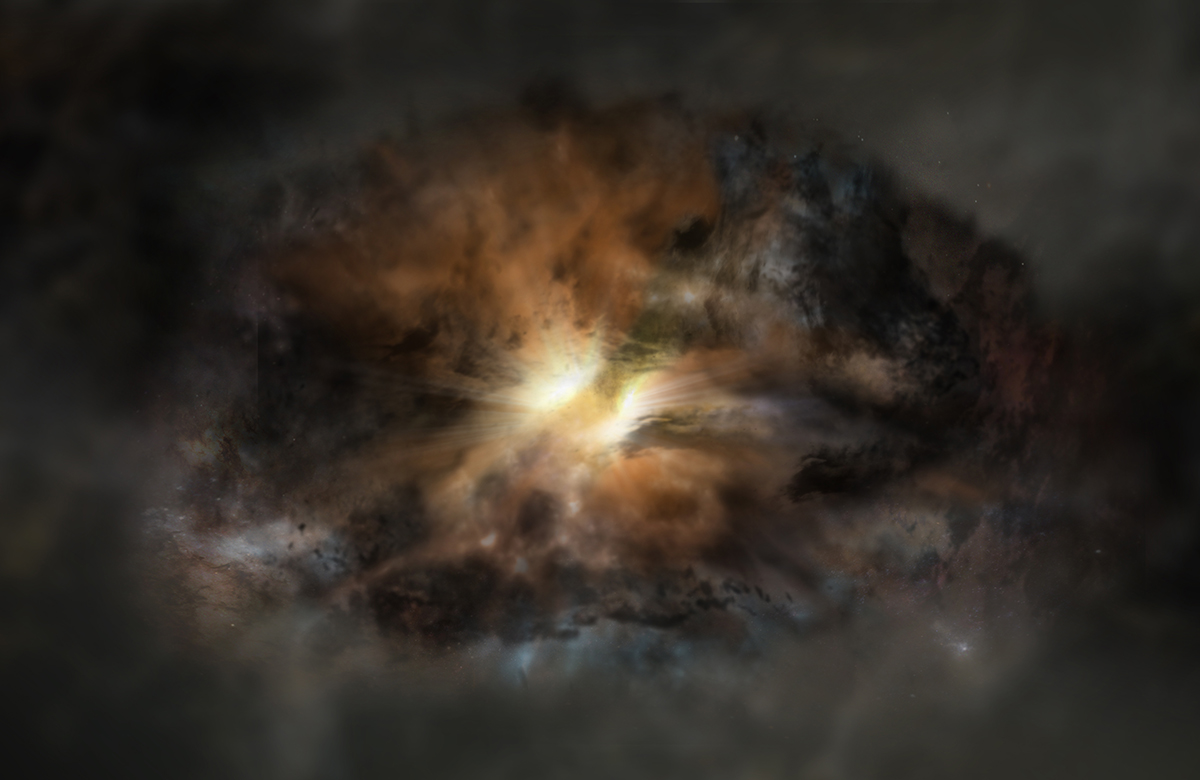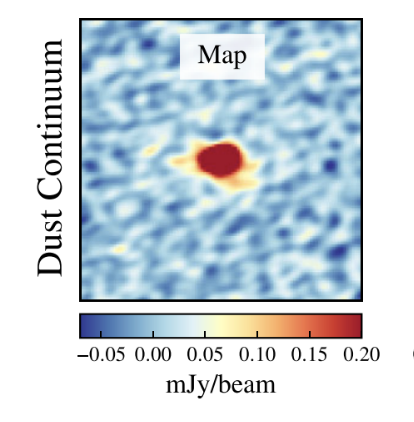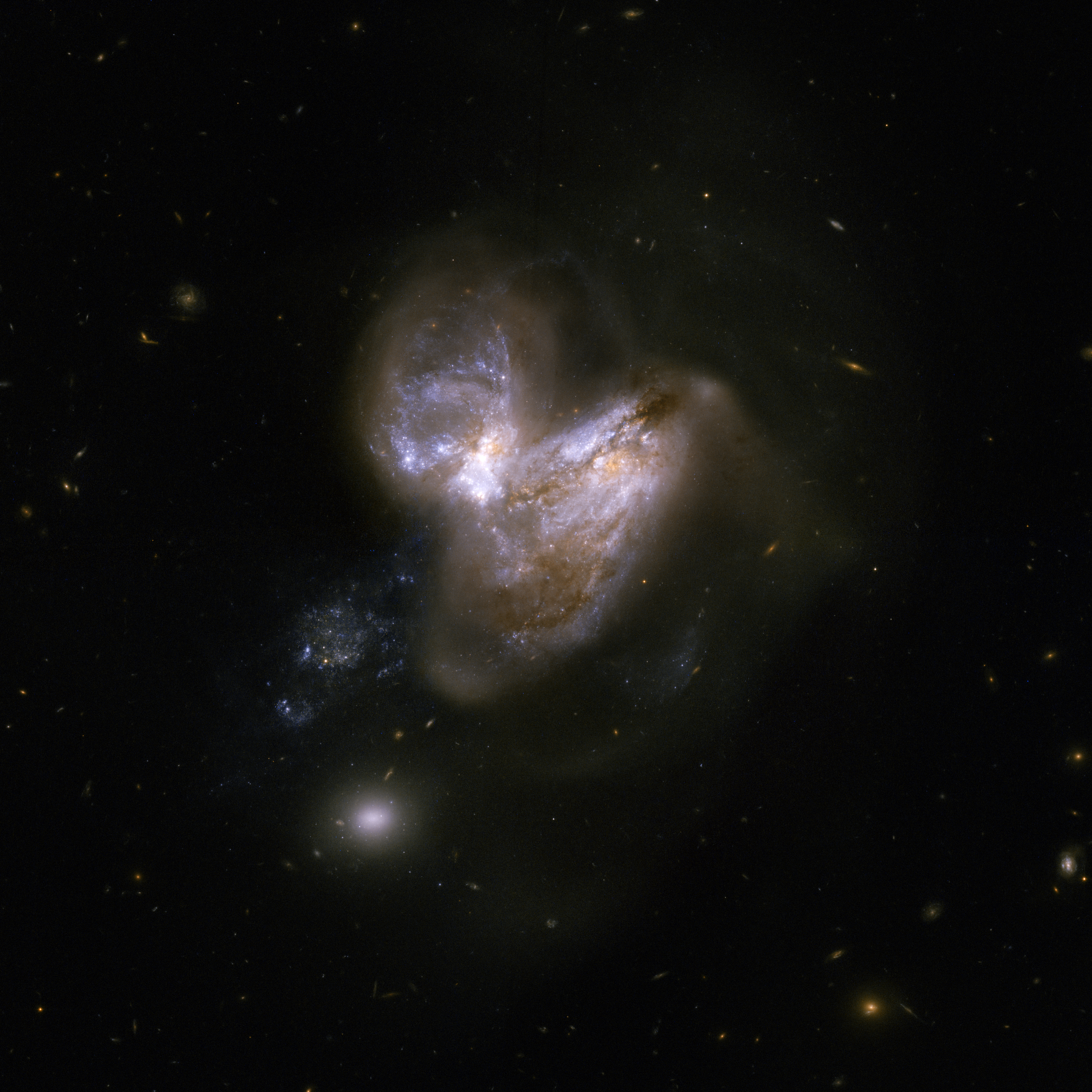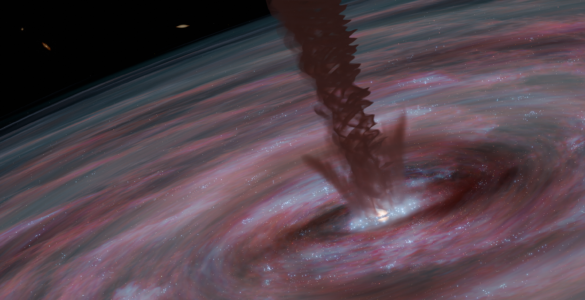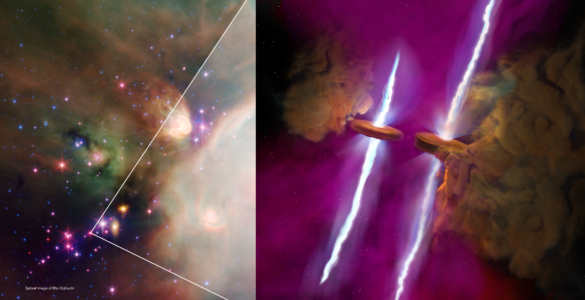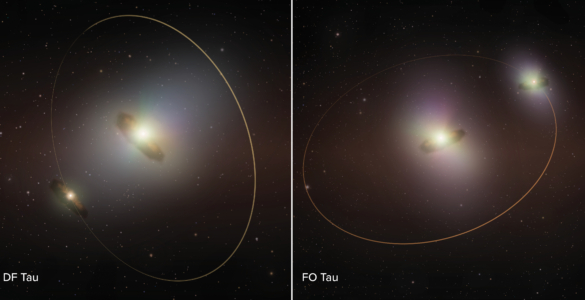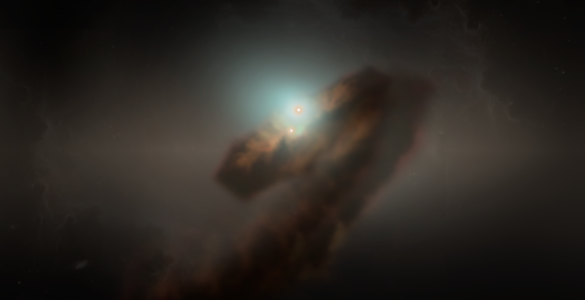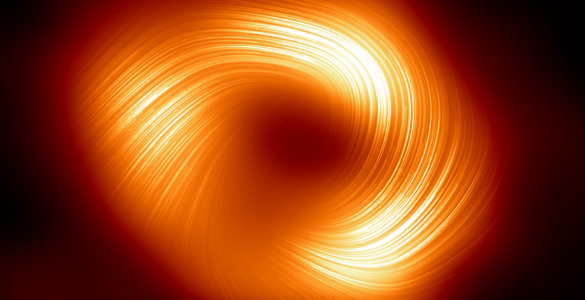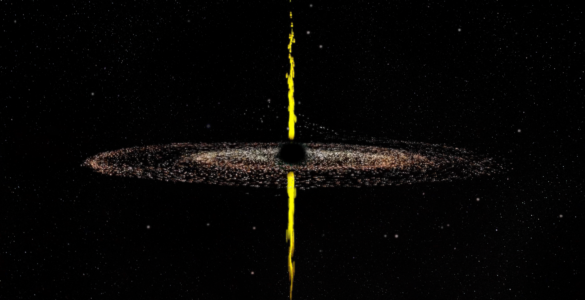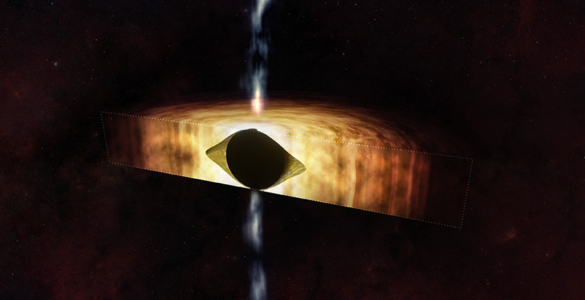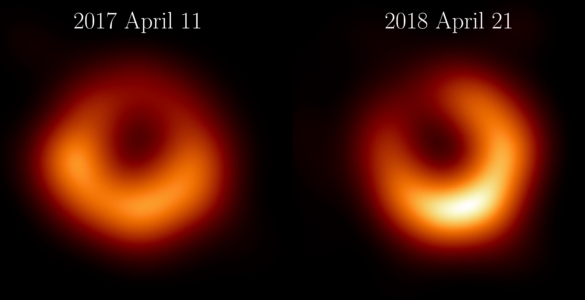Topics in This Issue:
Scientists searching for supermassive black holes (SMBHs) using the Atacama Large Millimeter/submillimeter Array (ALMA) have discovered one of the most extreme galaxies in the early Universe.
Within the galaxy, the team has discovered an SMBH hiding in a cloud of cosmic dust. And this SMBH is unlike others they’ve seen before.
This extreme galaxy is forming stars at a blistering pace, combined with a billion solar masses worth of interstellar dust, could explain why some early supermassive black holes are so difficult to find.
1. A bright, revealing source
While studying galaxies in the early Universe with the Atacama Large Millimeter/submillimeter Array (ALMA), scientists discovered one of the most extreme galaxies ever recorded in the early Universe. What’s more, it was hiding a unique supermassive black hole (SMBH). The observations could unlock clues about the early formation of these violent giants and how to find them. The results of the research appear in the Monthly Notices of the Royal Astronomical Society (MNRAS).
The newly discovered COS-87259— so new that it’s not yet been recorded in the NASA/IPAC Extragalactic Database (NED)— is an early galaxy located roughly 12.7 billion light years away from Earth in the constellation Sextans. It piqued the interest of scientists in 2021 because despite its distance— confirmed at z=6.8 thanks to the new ALMA observations— it was shining bright in the mid-Infrared. That intense light was caused by the combination of explosive star formation and the violent activity surrounding the galaxy’s SMBH.
2. A unique supermassive black hole
The presence of the SMBH— also sometimes referred to as an active galactic nucleus (AGN)— at the heart of COS-87259 wasn’t easy to separate from the bright galaxy because it is cloaked in a thick shroud of cosmic dust. What’s more, this SMBH covers an area of the sky less than ten times the size of the full Moon as seen from Earth. According to the scientists, this means there could be thousands more like it out there, waiting to be discovered.
And this SMBH is unique in another way that is puzzling scientists. It is ejecting a jet of material into space at roughly the speed of light, much like a quasar. This suggests that there should only be a few of these objects, making this SMBH a contradiction to itself.
3. Explosive star formation
According to the team, COS-87259 may contain over a billion solar masses worth of interstellar dust, one of the key ingredients for star formation. The galaxy is putting in overtime, forming stars at a blistering pace of more than 1,000 times the rate of star formation in our own Milky Way Galaxy. There is so much star formation activity that the SMBH was able to hide out in plain sight, and it took the highly sensitive Band 6 receivers—developed by the National Science Foundation’s National Radio Astronomy Observatory (NRAO)— at ALMA to “see through” it.
While other galaxies, like Arp 299, have been discovered bursting at the seams with stars, it wasn’t clear until now how this activity can contribute to our understanding, or lack thereof, of SMBHs, and the team has produced the first direct observational evidence of this connection. Ryan Endsley, the lead author on the paper and a postdoctoral fellow at the University of Texas at Austin said, “These results suggest that very early supermassive black holes were heavily obscured by dust, perhaps as a consequence of the intense star formation activity in their host galaxies.” While the team didn’t expect to find this object, Endsley added that “its discovery takes a step towards building a much better understanding of how billion solar mass black holes were able to form so early on in the lifetime of the Universe, as well as how the most massive galaxies first evolved.”
Resources
“ALMA confirmation of an obscured hyperluminous radio-loud AGN at z=6.853 associated with a dusty starburst in the 1.5 deg2 COSMOS field,” R. Endsley et al, 2023, Monthly Notices of the Royal Astronomical Society, 10.1093/mnras/stad266
About NRAO
The National Radio Astronomy Observatory (NRAO) is a facility of the National Science Foundation, operated under cooperative agreement by Associated Universities, Inc.
About ALMA
The Atacama Large Millimeter/submillimeter Array (ALMA), an international astronomy facility, is a partnership of the European Organisation for Astronomical Research in the Southern Hemisphere (ESO), the U.S. National Science Foundation (NSF) and the National Institutes of Natural Sciences (NINS) of Japan in cooperation with the Republic of Chile. ALMA is funded by ESO on behalf of its Member States, by NSF in cooperation with the National Research Council of Canada (NRC) and the Ministry of Science and Technology (MOST) and by NINS in cooperation with the Academia Sinica (AS) in Taiwan and the Korea Astronomy and Space Science Institute (KASI).
ALMA construction and operations are led by ESO on behalf of its Member States; by the National Radio Astronomy Observatory (NRAO), managed by Associated Universities, Inc. (AUI), on behalf of North America; and by the National Astronomical Observatory of Japan (NAOJ) on behalf of East Asia. The Joint ALMA Observatory (JAO) provides the unified leadership and management of the construction, commissioning and operation of ALMA.
Media Contact:
Amy C. Oliver
Public Information Officer, ALMA
Public Information & News Manager, NRAO
+1 434 242 9584
aoliver@nrao.edu



